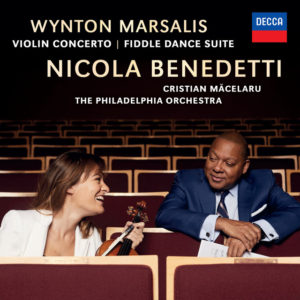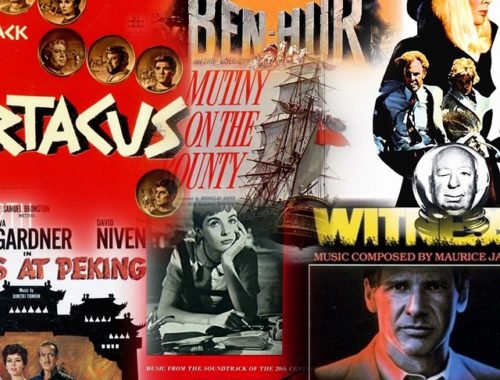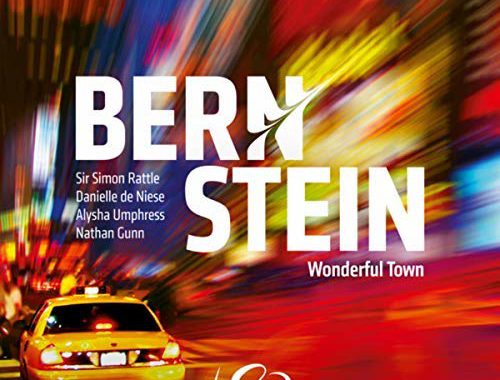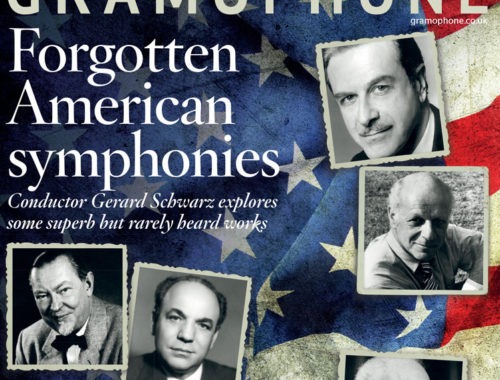GRAMOPHONE Review: Marsalis Violin Concerto/Fiddle Dance Suite – Nicola Benedetti, Philadelphia Orchestra/Măcelaru
 A number of things become clearer as Wynton Marsalis’ Violin Concerto unfolds: first, that there’s a story to be told, an American story; second, that Charles Ives – musical America’s greatest pioneer – has not passed Marsalis by; and thirdly, that the spirit of improvisation – be it from jazz or folklore – is at the heart of its musical personality. There’s something about its ‘evolution’ that flies in the face of notated music. The emergent Spiritual at the start (there’s no other way to describe a theme that soulful) truly comes from somewhere and is effectively a figure in a landscape, a figure preferring to journey than to arrive. That’s the spirit of the piece. Marsalis knows all about such journeys: he knows where he comes from and where he’s going.
A number of things become clearer as Wynton Marsalis’ Violin Concerto unfolds: first, that there’s a story to be told, an American story; second, that Charles Ives – musical America’s greatest pioneer – has not passed Marsalis by; and thirdly, that the spirit of improvisation – be it from jazz or folklore – is at the heart of its musical personality. There’s something about its ‘evolution’ that flies in the face of notated music. The emergent Spiritual at the start (there’s no other way to describe a theme that soulful) truly comes from somewhere and is effectively a figure in a landscape, a figure preferring to journey than to arrive. That’s the spirit of the piece. Marsalis knows all about such journeys: he knows where he comes from and where he’s going.
So the moment we scent polytonality and the first marching band passes by (it arrives with a whistle and doubtless a few cheer-leaders) a collage of sorts is emerging. Marsalis leads the cavalcade. The first big tutti belongs assuredly in the jazz world and whilst there’s plenty of violinistic swoon in the principal theme one can surely hear his trumpet in the nature of the writing.
Marsalis gives his muse, Nicola Benedetti, plenty to get her teeth into. A couple of big cadenzas tap into her Celtic roots and show off her technical prowess. There’s a furious motoric scherzo with more than a touch of Prokofiev about it (and yes another marching band) and the sultry Blues which builds to a gospel-like oration replete with whoops of endorsement from the orchestral winds is fervent and then some. Stamping and clapping its way into the finale, the Hoedown arrives in earnest – a raucous Hootenanny culminating in what can only be described as an American ‘hurrah’. Whereupon the lone fiddler tootles off into the mists of time, playing as she goes. I enjoyed the ride. The Philadelphia Orchestra and its audience clearly did, too.
And then there’s the companion piece – Fiddle Dance Suite – and it is very much the closest of relatives. This is Benedetti’s solo turn and it sits somewhere between Bach’s unaccompanied Partitas and a Celtic shindig (though the former might have drawn the line at a repetition of the aforementioned stamping). It’s a folksier, more localised, idiom for sure (I love the yearning homesick lament that is the second of its five movements) though the jazzer’s personality is reflected in the way it feels like music created in the playing of it. Honestly it’s hard to believe it’s written down at all.
You May Also Like

GRAMOPHONE: From Where I Sit – September 2019
12/09/2019
GRAMOPHONE Review: Bernstein Wonderful Town – Soloists, London Symphony Orchestra/Rattle
05/12/2018

